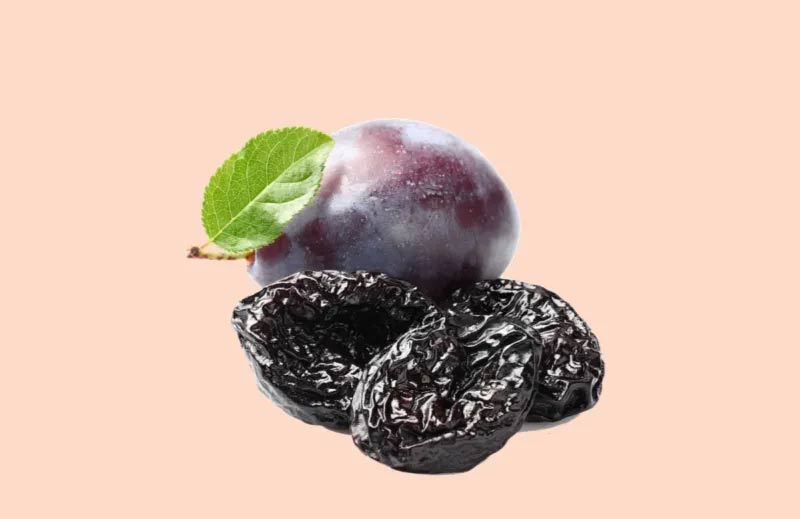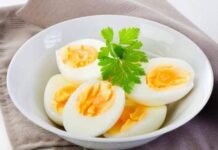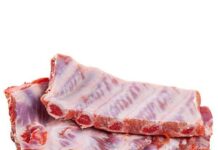If you’re looking to lose weight and burn belly fat, incorporating a good amount of healthy fiber into your diet is key. Trimming down your waistline not only makes you feel more comfortable but also has health benefits, as a slimmer midsection is healthier. While most people are aware of subcutaneous fat – the kind you can see and pinch – many are unaware of visceral fat, which lies deep within the abdomen. It surrounds important organs and can cause serious health issues such as certain cancers, stroke, type 2 diabetes, and more.
A large belly is the most obvious sign, but sometimes you may not even know it’s there. Measuring your waist circumference, body mass index (BMI), and waist-to-hip ratio are the most accurate ways to tell.
The good news is that you can get rid of both visceral and subcutaneous fat through dieting and exercise. Diet accounts for at least 80% of the equation when it comes to getting rid of visceral fat. Eating a healthy diet with plenty of colorful fruits and vegetables is always the advice from experts.
And consuming more fiber is one way to combat belly fat. Researchers have found that a high-fiber diet helps reduce visceral fat. If your goal is to get rid of belly fat or eat a fiber-rich diet for health maintenance, here are some foods recommended by nutrition experts.
Flaxseeds
- Nutrition: Per serving (1 tablespoon): 2.8 g fiber
Flaxseeds are a superfood that was once a popular topic on social media, but just because the hype has died down doesn’t mean you should overlook these tiny but nutrient-dense seeds. Studies have shown that regular consumption of flaxseeds helps lower “total cholesterol” and may help prevent the onset of type 2 diabetes and certain cancers. Flaxseeds can also improve digestion and reduce belly fat.
Flaxseeds are a great source of soluble fiber and omega-3 fatty acids. The fiber promotes a feeling of fullness, while omega-3s are linked to reduced inflammation and fat accumulation in the abdominal region.

Prunes
- Nutrition: Per serving (4-6, depending on size): 3 g fiber
While prunes are often considered a fruit that older adults eat to regulate digestion, they offer other significant health benefits, such as supporting bone health and improving heart health. Prunes can also help reduce belly fat, so it’s time to add them to your list.
Prunes have a unique combination of nutrients, including soluble and insoluble fiber, sorbitol, polyphenols, and prebiotics, which work together to support digestion and improve gut microbiota. Plus, their natural sweetness is a nutritious way to satisfy sugar cravings!
Papaya
- Nutrition: Per serving (1 small fruit): 3 g fiber
Papayas are rich in vitamin C, boosting the immune system and fighting off infections. This refreshing fruit is also high in vitamin K, essential for calcium absorption and bone health. Plus, papayas can help reduce stubborn belly fat.
Papayas are a tropical fruit known for their high fiber and antioxidant content. A series of studies in mice have shown their potential in reducing inflammation, lipid levels, insulin levels, and fat tissue. They are an excellent fruit choice for boosting fiber intake and controlling weight.
Figs
- Nutrition: Per serving (2 medium-sized fresh figs): 3 g fiber
Figs have a unique sweet and chewy texture and are packed with nutrients like potassium and calcium. But figs are also great for combating belly fat.
Fresh figs are loaded with fiber – so much so that they are often used to relieve constipation. We know that soluble fiber is crucial for weight control, blood sugar management, and reducing the risk of cardiovascular disease. When compared to other fruits, figs rank high in fiber content! Figs are versatile and can be eaten fresh, dried, paired with cereals or yogurt, or chopped up in salads for a sweet touch.

Sweet Potatoes
- Nutrition: Per serving (1 cup cubed): 4 g fiber
Sweet potatoes are rich in soluble and insoluble fiber, which helps add bulk, weight, and volume to your meals. They also contain anti-inflammatory antioxidants. A 2021 study published in the journal Antioxidants explained that reducing inflammation in the body could help decrease the tendency to gain fat mass. For best results, pair them with non-starchy vegetables and protein-rich choices.
Avocados
- Nutrition: Per serving (1/2 large avocado): 4.5 g fiber
Aside from their beloved role in toast, there are plenty of other reasons to eat avocados, including getting rid of belly fat.
You may know that avocados are packed with monounsaturated and polyunsaturated fats, the good-for-you kind. But you might be surprised to learn that they are also an excellent source of fiber! Half of a large avocado provides about 18% of the daily fiber needs for women and 12% for men. This combination of soluble and insoluble fiber helps create a sense of fullness and promotes regular bowel movements.
“4 Nos” for a Radiant Complexion in a 72-Year-Old Mother
Accomplished pianist Chloe Flower has credited her mother’s youthful, wrinkle-free complexion to a lifetime of healthy eating habits. In an exclusive reveal, Flower shared that her mother has never spent money on expensive skincare routines or cosmetic procedures, instead attributing her radiant skin to a wholesome diet.




































